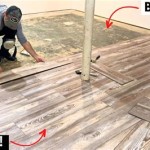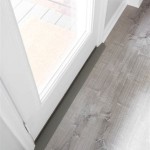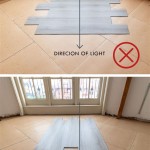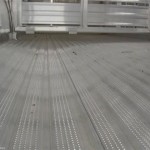Italian Tile Flooring: A Timeless Choice for Kitchens
Italian tile flooring has long been a favored selection for kitchens, prized for its blend of aesthetic appeal, durability, and ease of maintenance. The reputation of Italian tile stems from centuries of craftsmanship, innovative design, and the utilization of high-quality materials. This article explores the various aspects of Italian tile flooring pertinent to kitchen applications, analyzing its benefits, types, installation considerations, and maintenance practices.
The suitability of Italian tile for kitchens goes beyond mere aesthetics. Kitchens, by their very nature, are high-traffic areas susceptible to spills, stains, and temperature fluctuations. The inherent properties of Italian tile make it a formidable contender against these challenges, offering a practical and visually appealing flooring solution that can withstand the rigors of daily use.
Durability and Longevity
One of the most compelling reasons to choose Italian tile for kitchen flooring is its inherent durability. Manufactured from materials like porcelain, ceramic, or natural stone, Italian tiles are designed to resist chipping, cracking, and scratching. This robustness is particularly important in kitchens, where dropped pots, utensils, and heavy foot traffic are commonplace. The density and composition of Italian tiles contribute significantly to their ability to withstand these stresses, ensuring a longer lifespan compared to other flooring options such as wood or vinyl.
The production process of Italian tile also plays a crucial role in its durability. High-temperature firing techniques result in a hardened, vitrified surface that is inherently resistant to water absorption. This low porosity is critical in kitchens, as it prevents liquids, including spills from food or cleaning products, from penetrating the tile and causing staining or damage. In addition, the resistance to water helps prevent the growth of mold and mildew, creating a healthier kitchen environment.
Furthermore, the color and pattern of Italian tiles are often integrated throughout the entire tile body, rather than being applied as a surface layer. This through-body coloration ensures that any minor chips or scratches will be less noticeable, as the underlying color is similar to the surface. This feature contributes significantly to the long-term appearance and value of the flooring.
Variety and Design Versatility
Italian tile flooring offers an unparalleled degree of design versatility, catering to a wide range of aesthetic preferences and kitchen styles. Manufacturers offer a vast array of colors, patterns, sizes, and textures, allowing homeowners and designers to create truly unique and personalized kitchen spaces. Whether the goal is to achieve a rustic, traditional, modern, or minimalist aesthetic, Italian tile can be tailored to suit the specific design vision.
The availability of diverse tile formats is another significant advantage. Large-format tiles, for example, can create a seamless and expansive look in larger kitchens, minimizing grout lines and simplifying cleaning. Smaller mosaic tiles, on the other hand, can be used to create intricate patterns and decorative accents, adding visual interest and character to the floor. The choice of tile size and shape can significantly impact the overall perception of the kitchen space.
Italian tile manufacturers also excel at replicating the look of natural materials, such as wood, stone, and marble, using advanced printing and texturing techniques. These faux-natural tiles offer the aesthetic appeal of natural materials without the associated maintenance concerns or higher cost. For example, a porcelain tile that mimics the appearance of hardwood flooring can provide the warmth and beauty of wood while offering superior water resistance and durability.
The range of finishes available further enhances the design possibilities. Polished tiles offer a glossy, reflective surface that can brighten a kitchen and create a sense of luxury. Matte tiles provide a more subtle, understated look with a slip-resistant surface, making them a practical choice for kitchens where safety is a concern. Textured tiles can add tactile interest and visual depth to the floor, creating a more dynamic and engaging space.
Ease of Maintenance and Cleaning
The ease of maintenance associated with Italian tile flooring is another compelling reason for its popularity in kitchens. The non-porous surface of most Italian tiles makes them resistant to stains, spills, and dirt, simplifying cleaning and minimizing the need for harsh chemicals. Regular sweeping or vacuuming, combined with occasional mopping with a mild detergent, is typically sufficient to maintain the beauty and hygiene of the floor.
Unlike some other flooring options, Italian tiles do not require sealing or waxing, further reducing maintenance efforts and costs. The durable surface resists scratches and scuffs, minimizing the need for repairs or refinishing. This low-maintenance characteristic is particularly appealing in busy kitchens where time and effort are at a premium.
The grout lines between tiles can be a potential source of dirt and staining, but proper installation and regular cleaning can minimize these issues. Using a high-quality grout sealer can help to protect the grout from staining and discoloration. Regular cleaning with a grout brush and a specialized grout cleaner can help to remove dirt and grime and maintain the appearance of the grout lines. Alternatively, epoxy grout options are available, offering a virtually non-porous, stain-resistant solution with minimal maintenance requirements.
In the event of a spill, Italian tile flooring can be easily wiped clean with a damp cloth or mop. The resistance to water absorption prevents liquids from seeping into the tile and causing permanent staining or damage. This is particularly important in kitchens where spills from food, drinks, and cleaning products are common.
The material composition of italian tile minimizes the potential for harboring allergens and bacteria. This contributes to a healthier indoor environment, which is especially important for those with sensitivities. Regular cleaning further helps to maintain a hygienic kitchen flooring surface.
Choosing the right Italian tile for a kitchen involves several key considerations. Porcelain tiles are generally considered the most durable and water-resistant option, making them ideal for high-traffic areas and kitchens prone to spills. Ceramic tiles offer a more affordable alternative with a wide range of designs, but they may be less durable than porcelain. Natural stone tiles, such as granite or marble, offer a luxurious and unique aesthetic, but they require more specialized maintenance and can be more susceptible to staining.
The size and shape of the tile should also be carefully considered. Large-format tiles can create a more seamless and modern look, while smaller tiles can be used to create intricate patterns and decorative accents. The color and pattern of the tile should complement the overall design of the kitchen and create the desired ambiance.
Proper installation is crucial to ensure the longevity and performance of Italian tile flooring. It is essential to prepare the subfloor properly by ensuring that it is level, clean, and free of debris. Using a high-quality thin-set mortar and following the manufacturer's instructions are essential for achieving a strong and durable bond between the tile and the subfloor. Professional installation is highly recommended, as experienced installers have the knowledge and tools to ensure a flawless and long-lasting result.
The grout lines between tiles should be properly sealed to prevent staining and water penetration. Regular cleaning and maintenance of the grout lines are important to maintain the overall appearance and hygiene of the floor. In summary, Italian tile flooring represents a significant investment in a kitchen's aesthetics and functionality. The durability, design versatility, and ease of maintenance make it a long-term flooring solution that can enhance the value and enjoyment of the kitchen space.
When planning a kitchen remodel or new construction project, exploring the possibilities offered by Italian tile flooring is a worthwhile endeavor. The investment will yield a visually appealing, durable, and easily maintained surface for decades to come.

Tile Kitchen Floors Flooring For Kitchens

17 Best Kitchen Floor Tile Ideas 2024 Small

30 Kitchen Floor Tile Ideas Best Of Remodeling Tiles In Modern Retro And Vintage Style

Kitchen Tiles Supergres

Indoor Tile San Gimignano Ceramica Rondine Outdoor Kitchen Garden

Italian Provence Crema Floor Wall Tiles 1000x1000 Mm Porcelain Large Bathroom Kitchen

Italian Marble Tiles Kajaria S No 1 Tile Co

Italian Tile Backsplash Traditional Kitchen Dc Metro By User Houzz

Best Kitchen Flooring Options For You Forbes Home

15 Modern Kitchen Floor Tiles Designs With S In 2024 Tile Design Flooring
Related Posts








